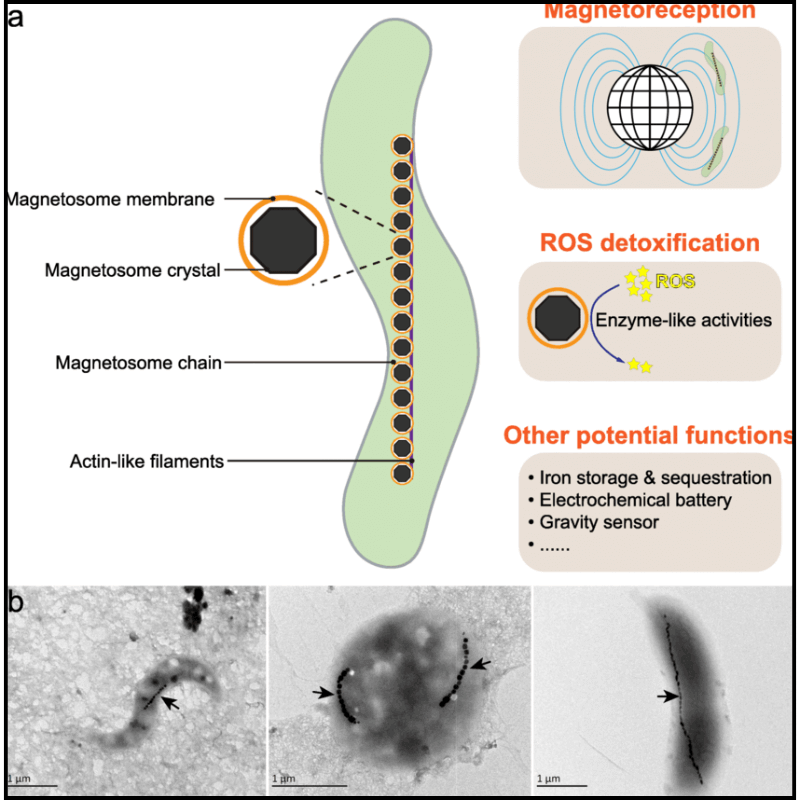
Magnetofossils, fossil remains of magnetic particles produced by magnetotactic bacteria have been spotted in rock varnish layers in Ladakh. Read here to learn about the significance of the discovery.
The study suggests that biotic processes in rock varnish formation indicate how life can exist in extreme environments, providing valuable insights for astrobiology and for planning future space missions that target the identification of habitable environments in space.
Magnetofossils discovered in Ladakh
Ladakh, known as the “cold desert of India,” experiences extreme climatic conditions such as high UV radiation, significant temperature variations, and limited water availability, making it a suitable terrestrial analogue for Martian studies.
Researchers from Birbal Sahni Institute of Palaeosciences, Lucknow (BSIP), an autonomous institute of the Department of Science and Technology (DST) were inspired by the similarity between the rock varnish observed in Ladakh and that seen on Mars, particularly during the Perseverance rover operations.
- They collected samples of rock varnish from the Ladakh region and chose and employed XPS to analyse the surface chemistry of the rock varnish.
- The analysis conducted by the lead author Dr. Amritpal Singh Chaddha and Dr. Anupam Sharma at BSIP helped identify the nanochains of magnetofossils.
- Additionally, higher concentrations of oxidized manganese (Mn4+) and carboxylic acid functionality on the varnish surface were identified, indicating organic signatures.
- The study published in Planetary and Space Science showed that rock varnish from Ladakh, a potential Martian analogue site, contains enriched concentrations of magnetic minerals likely derived from biotic sources.
Read: Fossils: everything you need to know
Significance of the discovery
- The findings highlighted the potential of rock varnish as an archive of ancient environmental records and as a geomaterial for astrobiological studies.
- By identifying biotic signatures in rock varnish, scientists can better target potential biosignatures on Mars and other planetary bodies, aiding the search for extraterrestrial life.
- This information is crucial for planning future space missions by ISRO and other space agencies, including Mars exploration, where identifying habitable environments is a primary goal.
Magnetofossils discovered in the Bay of Bengal
In early 2024, scientists unearthed giant Magnetofossils large magnetic crystals left behind by microorganisms, buried in 50,000-year-old sediment in the Bay of Bengal.
They are the youngest giant magnetofossils reported till now.
These fossils contribute to sediments’ magnetic signal, offering information about changes in past environments.
Geological Insights:
- Sediment Composition: The sediment sample from the southwestern Bay of Bengal revealed a rich composition of magnetic minerals, indicating a high degree of preservation and minimal post-depositional alteration.
- Paleomagnetic Record: The fossil contributes to the paleomagnetic record, offering valuable data on the Earth’s geomagnetic history. This can help scientists understand past shifts and reversals of the magnetic field.
Environmental and Climatic Implications:
- Climate Change Indicators: The presence of magnetotactic bacteria fossils in the sediment provides information about ancient environmental conditions, such as changes in climate and oceanography.
- Marine Ecosystems: The study enhances understanding of the historical marine ecosystems and their responses to climatic shifts over thousands of years.
Technological Advancements:
- Innovative Techniques: The study showcases the application of advanced technological methods in marine geology and palaeomagnetism, setting a precedent for future research in similar fields.
The findings pave the way for further investigations into the Bay of Bengal’s geological history and its implications for understanding Earth’s geomagnetic and climatic evolution.
What Are Magnetofossils?
Magnetofossils are tiny, fossilized remains of magnetotactic bacteria (MTB) that produce magnetic minerals within their cells.
These bacteria align themselves along the Earth’s magnetic field, aiding in their navigation and orientation in aquatic environments. The primary magnetic minerals they produce are magnetite (Fe₃O₄) and greigite (Fe₃S₄).
- Formation Process:
- Magnetotactic bacteria synthesize magnetic minerals intracellularly.
- Upon the death of these bacteria, the magnetic particles can become preserved in sediments.
- Over geological time scales, these particles can fossilize, becoming magnetofossils.
- Morphology:
- Magnetofossils are typically nanometer-sized, elongated, and have a specific crystalline structure.
- Their shape and size can vary depending on the species of bacteria from which they originated.
What are Magnetotactic Bacteria?

Magnetotactic bacteria (MTB) are a diverse group of bacteria that orient and navigate along magnetic field lines due to the presence of intracellular magnetic particles.
These bacteria synthesize nanometer-sized magnetite (Fe₃O₄) or greigite (Fe₃S₄) crystals, which align along the cell’s long axis and form structures called magnetosomes.
Key Characteristics:
- Magnetosomes:
- These are specialized organelles composed of magnetic crystals, typically magnetite or greigite.
- Magnetosomes are enclosed within a lipid bilayer membrane.
- They align in chains within the bacterial cell, acting like a compass needle that orients the bacteria in response to Earth’s magnetic field.
- Magnetotaxis:
- This refers to the ability of magnetotactic bacteria to navigate along magnetic field lines.
- Magnetotaxis helps bacteria locate optimal environments, typically low-oxygen zones at the bottom of water bodies or sediments, which are conducive to their growth and survival.
- Diverse Environments:
- MTBs are found in various aquatic environments, including marine, freshwater, and some anaerobic environments.
- They are often located in the oxic-anoxic transition zones of sediments where oxygen levels fluctuate.
Importance in Geology and Paleontology
- Paleomagnetism:
- Magnetofossils can record the Earth’s past magnetic field, providing valuable data for understanding geomagnetic reversals and field intensity changes.
- They are used to interpret sedimentary records, especially in marine and lake sediments.
- Biomineralization Studies:
- Studying magnetofossils helps in understanding the processes of biomineralization, where organisms produce minerals.
- It provides insights into the evolution of life and the early development of biological systems capable of producing magnetic materials.
- Environmental and Climate Studies:
- The presence and abundance of magnetofossils can indicate past environmental conditions, such as oxygen levels and productivity in ancient water bodies.
- They can also be used to infer climate changes based on sedimentary records.
Applications
- Scientific Research: Magnetofossils are used to study ancient geomagnetic field behaviour, aiding in the reconstruction of past continental positions and movement. They are instrumental in understanding the biogeochemical cycles in ancient environments.
- Technological Applications: The unique properties of magnetofossils inspire biomimetic materials for technological applications, such as in magnetic storage devices and biomedical fields.
Conclusion
Magnetofossils represent a fascinating intersection of biology, geology, and palaeomagnetism, offering unique insights into Earth’s history and the evolution of life.
Magnetobacterias have potential applications in nanotechnology, such as the synthesis of uniform magnetic nanoparticles for medical imaging and targeted drug delivery.
They are also being studied for their potential use in bioremediation of heavy metals and pollutants.
-Article by Swathi Satish






Leave a Reply